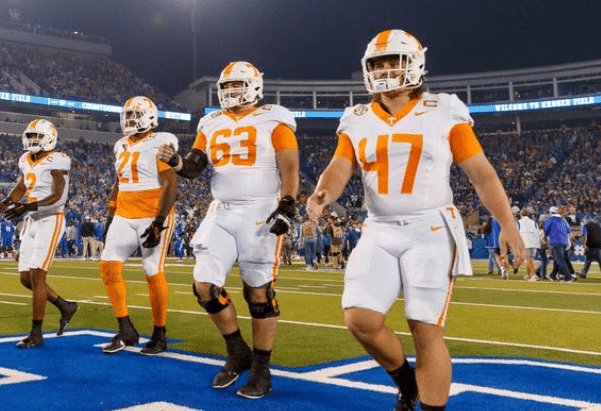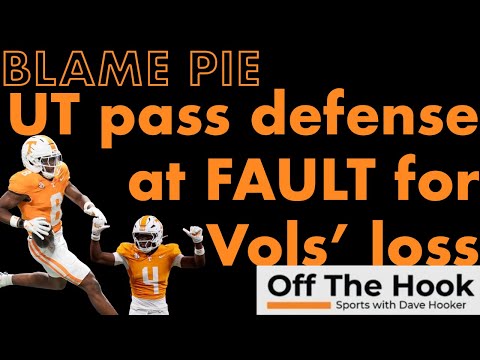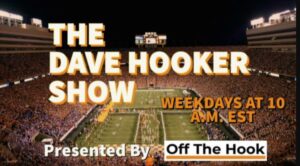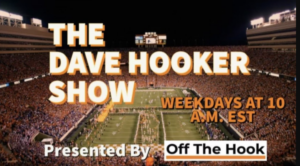Tennessee leads the SEC in rushing, but that doesn’t translate when it comes to short-yardage situations.
The Vols rank among the SEC’s worst teams at converting on third- and fourth-and-short.
While the Vols are effective running in a spread formation, UT gets stonewalled in short yardage because its offensive line isn’t built for power blocking.
Having a quarterback, who, until recently appeared reluctant to run, has also contributed to the negative numbers.
And while Milton could keep defenses honest by keeping more on a zone-read, what’s wrong with running a quarterback sneak with a 6-foot-5, 240-pound quarterback? If Philadelphia can run the tush-push with Jalen Hurts, why can’t the Vols with Milton?
How bad is Tennessee in fourth-and-short?
The Vols are 3-for-12 this season, 1-for-9 in SEC games.
Tennessee failed twice on fourth-and-short against Alabama, apparently teaching head coach Josh Heupel a lesson, because in a similar situation against Kentucky, Heupel punted.
I asked UT offensive line coach Glen Ellerbe what the Vols need to do to improve on converting short-yardage plays.
“That one hurts you as an O-Line coach, that really cuts you deep,’’ Elarbee said Monday at the Knoxville Quarterback Club. “We’ve been really, really efficient when we’ve been able to go fast and without condense (a bunch formation in which UT does not spread the field with wideouts). Every time we’ve had to condense or sub, the picture’s gotten muddy.
“For us, potentially slowing down and making sure we’re IDing where we need to be. When we get hats on hats, we’ll be better.
“Going fast in that situation, we haven’t been as clean as it needs to be. Not any question about it. Maybe in the future we’ll give those guys a chance to ID it and body up.’’
Elarbee also said, when on the road, changing the cadence might help.
Some point to analytics and say the Vols were correct going for it on fourth-and-short in its own territory against Alabama and other opponents. But analytics can also be misleading.
That decision should be situational – not based on a cookie-cutter chart.
For example, it makes more sense going for fourth-and-short against Vanderbilt than Alabama. Or when you have a gifted runner at quarterback. Or if you have a powerful offensive line. Or if you have Travis Henry.
But the chart doesn’t distinguish whether you’re playing Alabama or Alabama A&M.
Tennessee would be better served by running Milton on a sneak. Or finding a power back. Or running a true read-option.
Otherwise, on fourth-and-short in your own territory or at midfield, you should punt.
Elarbee said the return of center Cooper Mays (hernia surgery Aug. 9) has made a huge difference in the run game. Against two of the SEC’s top run defenses, the Vols ran for 232 yards against Texas A&M and 254 against Kentucky.
“It’s been really fun having Coop back,’’ Elarbee said. “It’s made a difference for us these last (four) games inside, what he can do physically and the leadership capability and keeping guys calm on the sideline. This last game (Kentucky) we got back to tempo … who we are traditionally.’’
Elarbee said Mays isn’t afraid to get in a teammate’s face.
“He’s the leader on the field,’’ Elarbee said of Mays. “Coop doesn’t mind telling guys to get their ass moving. Sometimes you need a little bit of that.’’










